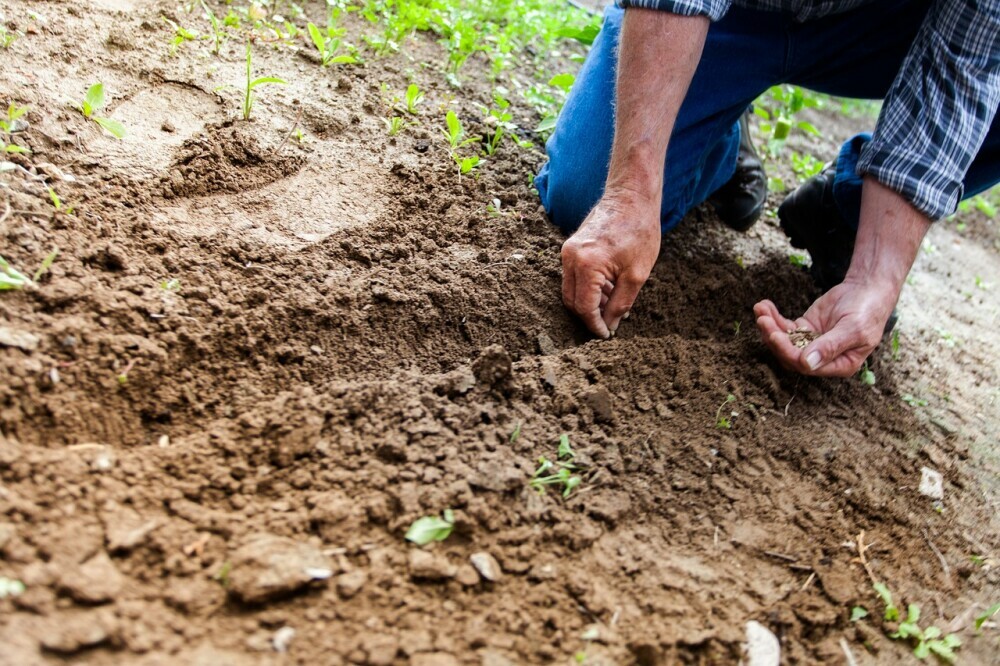Table of Contents
Introduction
I’m going to break down what Community supported Agriculture (CSA) is all about. Imagine a system where the risk and rewards of farming are shared. That’s the essence of a CSA. It’s a partnership between farmers and consumers where responsibilities, costs, and the bounty of the land are divided amongst a committed group of individuals who support one another.
The historical development of CSAs has roots in 1960s Switzerland and Japan, where consumers interested in safe food and farmers seeking stable markets for their crops began the cooperative movement. Fast-forward to the 1980s, and this concept took root in the US, flourishing into the dynamic network we see today.
The basic principles of community-supported agriculture center around direct sales from farms to consumer. Here’s how it generally works: members buy ‘shares’ of a farm’s harvest in advance, then enjoy a portion of the crops as they’re grown and harvested. This model promotes local agriculture, ensures fresh, seasonal produce, and fosters a sense of involvement in the food production process.
The Soil and Soul Connection: Why CSA Matters

Now, let’s explore the impactful why behind community-supported agriculture, or CSA. This model isn’t just about fresh produce; it’s also about strengthening the very fabric of local communities. So, why does CSA matter, and how does it make a difference? I’m going to break it down for you.
First off, CSAs are vital in reinforcing local food systems. By directly connecting farmers to consumers, they reduce the need for long-distance transportation, helping to ensure fresher, more nutritious offerings. But that’s not all; when you support a CSA, you’re also investing in your local economy. It’s a win-win: local farmers gain financial security, and you get exceptional produce.
Sustainably speaking, CSA farms often strive for environmentally friendly practices. Many use organic methods, focus on soil health, and prioritize biodiversity. This approach not only nurtures the earth but also leads to healthier, less pesticide-dependent food hitting your plate. Think of it as a commitment to Mother Nature that has a direct impact on your own well-being.
But perhaps the most beautiful aspect of CSAs is how they knit people together. Picture this: diverse groups of people united by the shared goal of supporting sustainable food. These memberships create a sense of belonging, weaving individuals into a community tapestry enriched by farm events, volunteer opportunities, and the shared joy of seasonal harvests.
CSAs embody a movement towards conscious consumption, where understanding the origins of your food is just as important as the taste. As a member, you become not just a consumer but a co-producer, actively participating in the stewardship of the land. Now, fostering these connections aligns you with a greater purpose, doesn’t it?
Harvesting Support: How CSAs Work
If you’re considering becoming part of a Community-supported Agriculture program, it’s helpful to understand how they operate. Essentially, CSAs rely on a simple yet powerful premise: members buy shares of a farm’s harvest in advance, which in turn provides the farmer with the necessary upfront capital to cover anticipated costs for the season.
These shares usually come in the form of weekly or bi-weekly boxes of fresh, seasonal produce, but can also include other farm products like eggs, dairy, or meat, depending on the farm’s offerings. The share might vary each week based on what’s in season and abundant at the time.
On the flip side, being involved in a CSA means embracing some level of unpredictability. Weather conditions, pests, and other factors can affect the quantity and type of produce available. However, this is also a chance for members to connect more deeply with the natural cycles of farming.
In terms of logistics, some CSAs require members to pick up their shares from the farm or a designated drop-off point, while others offer home delivery services for an extra fee. There might also be opportunities for members to visit the farm, participate in events, or even volunteer their time.
From the farmer’s perspective, a CSA can help stabilize their income and reduce marketing costs, but it also requires careful planning and communication to manage expectations. The goal is to create a win-win situation, where members enjoy the freshest produce possible, and farmers have a secure market for their goods.
From Farm to Fork: The Member Experience

If you’re considering joining a CSA, there’s a fair amount to ponder over. You’re not just buying groceries; you’re investing in your health, community, and the livelihood of local farmers. So what should you look for when choosing a CSA? Start by checking the distance from the farm, the variety of produce offered, and of course, the pickup times and locations. And don’t hesitate to ask about farming practices if you’re curious about organic methods or pesticide use.
Those magical baskets brimming with vibrant fruits and veggies? They don’t just contain the stalwarts like tomatoes and lettuce. CSAs often include heirloom varieties and unique finds that can turn an ordinary dinner into a culinary adventure. You might uncover kohlrabi or rainbow carrots, opening up a whole new world of flavors. It’s like a weekly surprise that nudges your diet towards diversity and experimentation.
Some folks are hesitant to join because of ‘too much of a good thing’. That’s understandable. Getting a heap of produce each week can be overwhelming. But look at it as a chance to share with neighbors, preserve seasonal flavors through canning, or discover the freezer as your new best friend. Plus, many CSAs offer half shares or partner you with another member to split the bounty.
Moving seamlessly into the next theme, it’s time to consider the deeper roots of CSAs in sustainable farming. How does becoming a CSA member push the envelope on eco-friendly agriculture? Let’s dig into that in the next section.
Cultivating Change: CSAs Advancing Sustainable Practices
Community-supported agriculture isn’t just about fresh produce; it’s also a platform for promoting sustainable agricultural practices. Many CSA farmers are deeply committed to ecological farming methods that protect the environment and promote soil health.
When you participate in a CSA, you’re supporting innovative farming techniques that often go hand in hand with organic or biodynamic farming. These methods reduce reliance on harmful pesticides and fertilizers, fostering a natural balance that is less disruptive to local ecosystems.
Moreover, education is a significant component of CSAs. I’ve seen many farmers take the opportunity to educate members about the importance of sustainable agriculture, sometimes through newsletters, farm visits, and even hands-on workshops. It’s this level of engagement that empowers consumers to make informed choices about their food.
Looking at the big picture, CSAs play a crucial role in shaping the future of sustainable agriculture. By choosing to support local farms over industrial food producers, members are helping to create a more resilient food system that prioritizes the well-being of the planet.
In my opinion, the most impactful aspect of CSAs in terms of sustainability is their ability to re-localize food production and distribution. This reduces the carbon footprint associated with long-distance transportation of food products, and also helps preserve local varieties and biodiversity.
Sowing Seeds for the Future: How to Support and Start a CSA
I’m here to help you with taking the proactive steps to either support an existing CSA or start a new one. Whether you’re an enthusiastic consumer or a potential farmer, there’s a space for you in the CSA landscape.
To back a local CSA, simply being a member can mean the world to these vital agricultural ventures. You can also spread the word, volunteer your time, or even assist with organizing community events.
If you want to plunge into the bountiful world of CSAs by starting one, ensure you understand the commitment. Crafting a business plan, researching the market, and connecting with local farmers are crucial first steps.
You have numerous resources at your disposal, from agricultural cooperative extensions to CSA networks that offer invaluable guidance. Choose something that resonates with you and aligns with your community needs.
Remember, your first attempt doesn’t need to be your last. Iteration is the key to perseverance in the farming community. If one approach doesn’t work, you can always adjust your strategy down the road.
I really hope that you feel inspired to contribute to the sustainability and success of community-supported agriculture. By embracing and nurturing such initiatives, we are collectively seeding a healthier, more resilient food system.
If you would like to read more how you can enjoy organic while supporting the local community then, click here.
Kay,
greenlifehub.com

